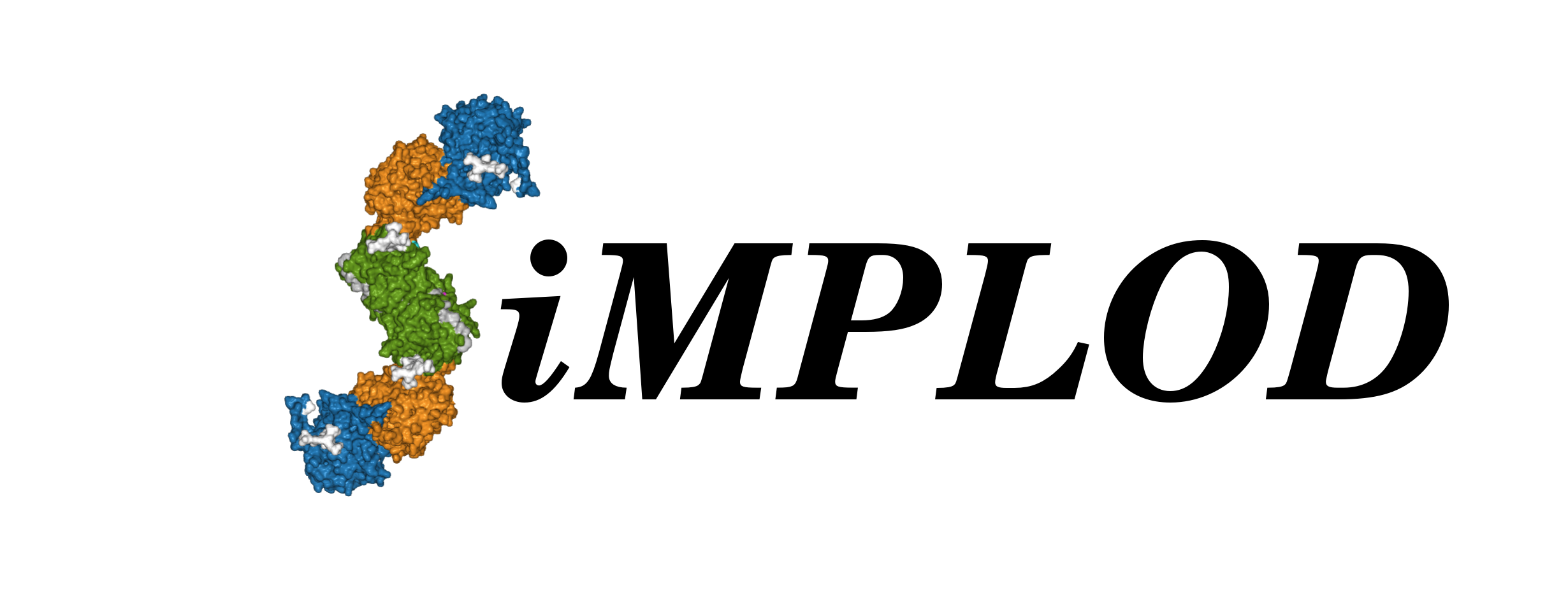 About
Contact
References
Structures
Adv. Search
Stats
Demo
About
Contact
References
Structures
Adv. Search
Stats
Demo
| LH3 loop283-297 | ||
| SiMPLOD ID |
SiMPLOD3-293 | |
| Isoenzyme |
Lysyl Hydroxylase 3 (human) - UniProt - Full Info | |
| Mutation type |
Mutation for Biochemical Studies (not necessarily related to observed polymorphisms) | |
| Evidence at protein level |
This variant EXISTS at the protein level: published experimental data support its existence as protein product. | |
| LH Activity |
No experimental data available | |
| GT/GGT Activity |
+ | References |
Heikkinen et al., 2000 - DOI - PubMed | Notes from publications |
To characterize PLOD3 activity Heikkinen et al. used polyclonal antibodies against the PLOD3 aminoacid sequence 283–297. Binding of the antibodies in this region partially inhibited glycosyltranferase activity. |
| Structural Observations |
Use of specific antibodies to block this region |
|
| Related Entries |
SiMPLOD1-855: LH1 ASP271ASP (SNP) SiMPLOD3-388: LH3 ASN283ASP (SNP) SiMPLOD3-432: LH3 ASN283SER (SNP) SiMPLOD1-1190: LH1 GLU272LYS (Uncertain significance) SiMPLOD2-1099: LH2a PHE284PHE (SNP) SiMPLOD2-1100: LH2a PHE284LEU (SNP) SiMPLOD3-368: LH3 GLN284GLU (SNP) SiMPLOD3-375: LH3 GLN284ARG (SNP) SiMPLOD2-1114: LH2a ASP285ASN (SNP) SiMPLOD2-1115: LH2a ASP285HIS (SNP) SiMPLOD3-659: LH3 ARG286GLN (SNP) SiMPLOD3-713: LH3 ARG286TRP (SNP) SiMPLOD1-31: LH1 ARG275HIS (Uncertain significance) SiMPLOD1-32: LH1 ARG275LEU (SNP) SiMPLOD2-1022: LH2a VAL287VAL (SNP) SiMPLOD2-961: LH2a ASP288ASN (SNP) SiMPLOD2-962: LH2a ASP288HIS (SNP) SiMPLOD1-823: LH1 LYS278LYS (SNP) SiMPLOD1-829: LH1 LYS278ARG (SNP) SiMPLOD1-830: LH1 LYS278THR (SNP) SiMPLOD3-360: LH3 PRO290PRO (SNP) SiMPLOD1-779: LH1 GLY279ASP (SNP) SiMPLOD3-360: LH3 PRO290PRO (SNP) SiMPLOD1-1194: LH1 ILE280THR (Uncertain significance) SiMPLOD3-360: LH3 PRO290PRO (SNP) SiMPLOD1-104: LH1 GLY281GLU (Uncertain significance) SiMPLOD3-617: LH3 GLY291ALA (SNP) SiMPLOD3-618: LH3 GLY291GLU (SNP) SiMPLOD3-619: LH3 GLY291VAL (SNP) SiMPLOD1-319: LH1 delta282-325 (Pathogenic) SiMPLOD1-787: LH1 ASP282ASP (SNP) SiMPLOD1-319: LH1 delta282-325 (Pathogenic) SiMPLOD2-1036: LH2a ASP293VAL (SNP) SiMPLOD2-1098: LH2a ASP293ASN (SNP) SiMPLOD1-319: LH1 delta282-325 (Pathogenic) SiMPLOD1-319: LH1 delta282-325 (Pathogenic) SiMPLOD1-863: LH1 LEU285LEU (SNP) SiMPLOD2-970: LH2a HIS295TYR (SNP) SiMPLOD2-1033: LH2a HIS295LEU (SNP) SiMPLOD1-319: LH1 delta282-325 (Pathogenic) SiMPLOD1-714: LH1 PRO286SER (SNP) SiMPLOD1-903: LH1 PRO286PRO (SNP) SiMPLOD3-299: LH3 PRO296ARG (Uncertain significance) SiMPLOD3-300: LH3 PRO296LEU (SNP) SiMPLOD3-315: LH3 PRO296HIS (Uncertain significance) SiMPLOD3-565: LH3 PRO296PRO (SNP) SiMPLOD1-193: LH1 THR287THR (Uncertain significance) SiMPLOD1-319: LH1 delta282-325 (Pathogenic) SiMPLOD1-919: LH1 THR287MET (Uncertain significance) SiMPLOD3-365: LH3 ARG297GLY (SNP) SiMPLOD3-366: LH3 ARG297TRP (SNP) SiMPLOD3-699: LH3 ARG297GLN (SNP) | |
| Last Update |
2021-06-23 08:38:51 | |
|
The three-dimensional visualization is currently based on the homology model of full-length, dimeric human LH3 (generated using the crystal structure of full-length human LH3 as template). You may select a different PDB model file to visualize the mutation(s) using the drop-down menu below (page will refresh): |
||
Thank you for using SiMPLOD - Created by Fornerislab@UniPV Follow @Fornerislab - Last curated update: 1970-01-01 00:00:00
We truly hate messages and disclaimers about cookies and tracking of personal info. But don't worry, we don't use any.